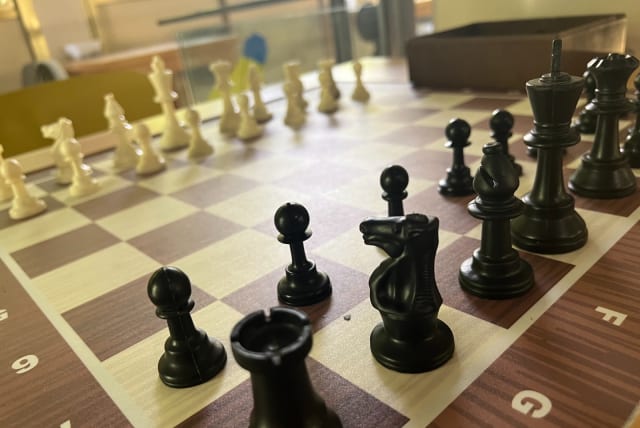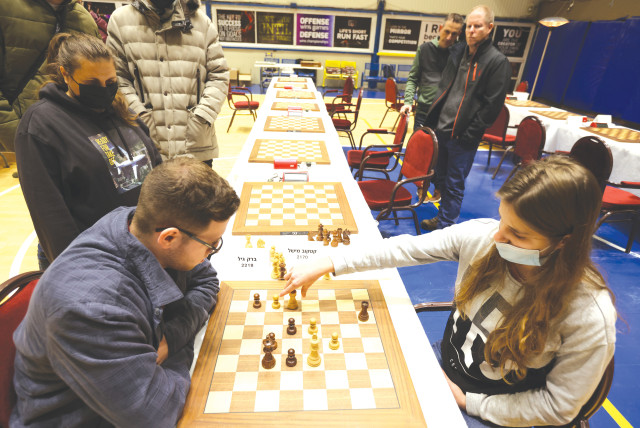The Game of Queens: Why do women have a lower ceiling in chess?

In checking gender bias in chess playing, New York researchers find parents and coaches shortchange girls’ potential.
Chess is known as the game of kings, but due to the underestimation of females’ intellectual capabilities at playing, it isn’t the game of queens. Parents and coaches of youth chess players peg the highest potential rating of girl players to be lower than that of boy players, according to New York University psychologists.
“The Queen’s Gambit” miniseries in 2020 portrayed the life of a fictional chess prodigy, Beth Harmon, who was continuously underestimated in male-dominated competitions. The NYU team, who have just published their finding in the Journal of Experimental Psychology: General under the title “Checking gender bias: parents and mentors perceive less chess potential in girls,” has now found some real-life evidence of what Harmon faced as a younger player.
It was the first large-scale quantitative investigation of the obstacles that girls and women encounter in chess. The study’s authors – who included Jennifer Shahade, a two-time US Women’s Chess champion – found that coaches who think “brilliance” is required to succeed in chess also believe that the girls whom they train would be more likely to stop playing the game due to lack of ability than their males would.
But, at the same time, coaches and parents don’t think girls encounter a less-supportive environment than do boys – or that girls might be more likely to stop playing as a result.
“While it is inspiring to see a fictional woman winning in a space dominated by men, real-world women remain underrepresented in chess,” said NYU doctoral student Sophie Arnold who was the lead author of the paper. “This study identifies one contributing reason as to why: Parents and coaches are biased against the female youth players in their own lives.”
“It is striking that even the parents and coaches who have a vested interest in girls’ success hold biases against them and may also have some blind spots about the barriers to girls’ success,” added psychology Prof. Andrei Cimpian and a senior author of the paper.
“These beliefs are likely to be harmful both to girls who already play chess and to those who could want to. Would you be interested in participating in an activity where your potential is downgraded by your parents and by your coaches before you have even started?” said Shahade, the author of Play Like a Girl! who was involved in the study design.
Where is the gender disparity?
In the US Chess Federation, only 13% of players are women, raising questions about what drives the gender disparity. Previous studies have largely focused on potential deficits in chess ability among girls that overlooks the role of adult leadership.
“This line of scholarship can make the overrepresentation of men in chess seem like it’s a ‘girls and women problem’ rather than a ‘chess problem,’ ” Arnold suggested.
The researchers considered how the important people in girls’ lives including coaches and parents may be biased against them when assessing their potential, even at a young age, and how these perceptions can help explain the huge gender gap in who plays chess.
To do so, the team interviewed nearly 300 parents and mentors – 90% of whom were men – who were recruited through the US Chess Federation. In the survey, they reported their evaluations of and investment in approximately 650 youth players. In addition, parents and coaches were asked if they thought aptitude in chess requires brilliance – a measure Cimpian and his colleagues have used in the past to detect stereotyping and gender bias in academic fields.
The researchers found bias against girls across multiple measures. Parents and coaches thought that female youth players’ highest potential ratings were on average lower than those of male players – a bias that was worse among parents and mentors who believed that success in chess requires brilliance.
Notably, these coaches and parents didn’t recognize that their own presumptions could have functioned as a barrier to girls succeeding in the game. Specifically, coaches who thought brilliance was required to succeed in chess also thought their female mentees would be more likely to stop playing chess due to a lack of ability than their male mentees. And, in fact, parents and coaches did not believe that girls, relative to boys, encounter a less-supportive environment in chess and might stop playing chess as a result.
Because expertise in chess takes many years to develop, redressing the gender balance among top adult players will be difficult, they wrote, if not impossible, without an understanding of the problems with the early chess “pipeline.” The study’s focus on youth players is also important because at this stage in their chess careers there is considerable ambiguity about their long-term potential.
But not all news was bad – the researchers found no bias in the amount of resources such as time and money that coaches and parents reported being willing to invest in girls relative to boys.
“This study provides the first large-scale investigation of bias against young female players and holds implications for the role of parents and mentors in science and technology – areas that, like chess, are culturally associated with intellectual ability and exhibit substantial gender imbalances,” Arnold concluded.
Jerusalem Post Store
`; document.getElementById("linkPremium").innerHTML = cont; var divWithLink = document.getElementById("premium-link"); if (divWithLink !== null && divWithLink !== 'undefined') { divWithLink.style.border = "solid 1px #cb0f3e"; divWithLink.style.textAlign = "center"; divWithLink.style.marginBottom = "15px"; divWithLink.style.marginTop = "15px"; divWithLink.style.width = "100%"; divWithLink.style.backgroundColor = "#122952"; divWithLink.style.color = "#ffffff"; divWithLink.style.lineHeight = "1.5"; } } (function (v, i) { });


